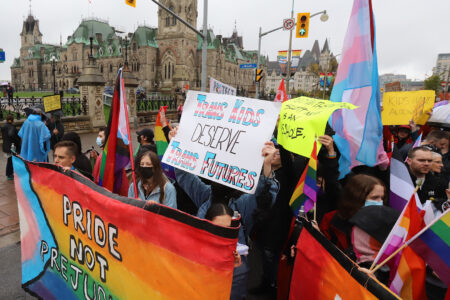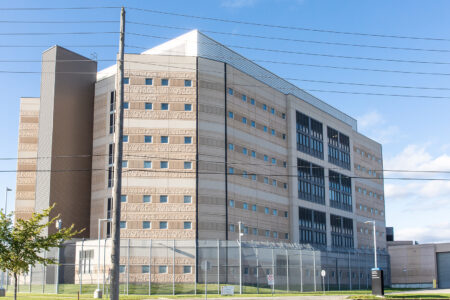
Prime Minister Justin Trudeau has hailed the new approach to Supreme Court appointments unveiled last week as “open, transparent and…a higher standard for accountability.” While devils may lurk in some details, the proposals promise a more transparent and inclusive appointments process, and for this reason alone they are significant and welcome. The changes are also intended to create a more diverse and inclusive Supreme Court. The focus on diversity as an important characteristic of the Court (and its justices) deserves more attention, as it engages the complicated relationship between geographic representation, professional accomplishment, knowledge and analytic ability, demographic background, bilingual capacities, personal attributes and temperament, and experience.
Under the new appointments process candidates may nominate themselves, or they might be tapped by an appointed advisory board. Either way, all candidates will fill out a lengthy questionnaire (including essay questions!) and submit writing samples. While the government retains exclusive discretion to select the justices, it will do so on the basis of a short list provided by the advisory board — a new entity for which the government selects only three of the seven members. The Advisory Board will provide the “nonbinding, merit-based” recommendations of three to five qualified and “functionally bilingual” candidates to the prime minister for consideration. The board also will explain how each short-listed candidate meets the publicly available criteria. Parliamentarians (through the House of Commons Standing Committee on Justice and Human Rights) will have opportunities to question the Minister of Justice and the chair of the Advisory Board on the candidate who is ultimately selected, and to get to know the candidate in a session moderated by a legal academic.
Despite recent attempts at reform, increased scrutiny of candidates and the introduction of various advisory committees, the Supreme Court has remained remarkably homogeneous. Canada has never had Supreme Court justice who is Indigenous, who is from a visible minority, who has a religious background that is not Christian or Jewish, or who self-identifies as other than heterosexual. Suffice it to say, the Supreme Court of 2016 simply does not reflect the Canada of 2016 — not even approximately.
The proposed approach is clearly intended to remedy this lack of diversity, but that approach is nevertheless selective. It assumes (without justification) that a candidate who speaks English and French should be preferred over a candidate who speaks English and one of Canada’s Indigenous languages, and that a candidate who is bilingual and White should be preferred over a one who is unilingual but reflects an ethnic community that is otherwise under-represented on the Court. While parties may make submissions to the Court in either official language, which makes bilingual justices a clear asset, mandating that only functionally bilingual candidates will be considered is new. Privileging one vision of diversity over others is a challenging prospect in the Canada of 2016.
The Supreme Court appointment process is a microcosm of Canada’s ongoing search for national identity and its desire for unifying national institutions.
Regional representation is even murkier. Apart from the statutory requirement of three justices from Quebec, regional representation is a convention. Traditionally, the West receives two seats, Ontario and Quebec three each, and Atlantic Canada one. While it is not legally enforceable, this convention has existed since the founding of the Supreme Court. Regional identities are a significant part of Canada’s past, but will they resonate in Canada’s future (as opposed, for instance, to urban/rural identities, or northern/southern identities)? To take just one example, when Canada appoints its first Indigenous Supreme Court justice, the significant territory for that individual may well be the ancestral territory of an Indigenous nation, and not the province or provinces where that territory is located. The Supreme Court appointment process is (and has always been) a microcosm of Canada’s ongoing search for national identity and its desire for unifying national institutions. As Canada evolves, so must its notions of diversity and inclusion.
The place of diversity and inclusion in a merit-based appointment process also is in flux. While almost all agree Supreme Court appointments should be made based on merit, the concept of merit signifies different things to different people. For some, it can be measured objectively (for example, academic degrees, career achievements, and demonstrated legal expertise). For others, it can also encompass more holistic aspects of a potential jurist, such as empathy, imagination, humility, resilience and interpersonal/intercultural skills. But where do gender, race, ethnicity, age, sexual orientation, religion, culture and life experience fit into these understandings of merit? I hope the new appointment process facilitates a discussion of these questions.
Undoubtedly, the Advisory Board, which is working on the public criteria for appointments under the new model, will cite many of these and other factors. Identifying which qualities are salient, however, can be an elusive (and potentially divisive) process. While public discussion will be important in this regard, the process should be judged on its results. There needs to be more transparency in the appointment process, and achieving this will be a big step forward. But it may side-step some of the hardest and most important questions of all: whose idea of inclusion should come first, and whose should come second, and how long should those on the outside wait to be welcomed in? Perhaps this should be part of the public discussion too.
Photo: Justice Michael Moldaver (left) shares a laugh with his Supreme Court colleagues during a welcoming ceremony in the Supreme Court of Canada, Monday November 14, 2011. The Canadian Press/Fred Chartrand
Do you have something to say about the article you just read? Be part of the Policy Options discussion, and send in your own submission. Here is a link on how to do it. | Souhaitez-vous réagir à cet article ? Joignez-vous aux débats d’Options politiques et soumettez-nous votre texte en suivant ces directives.







